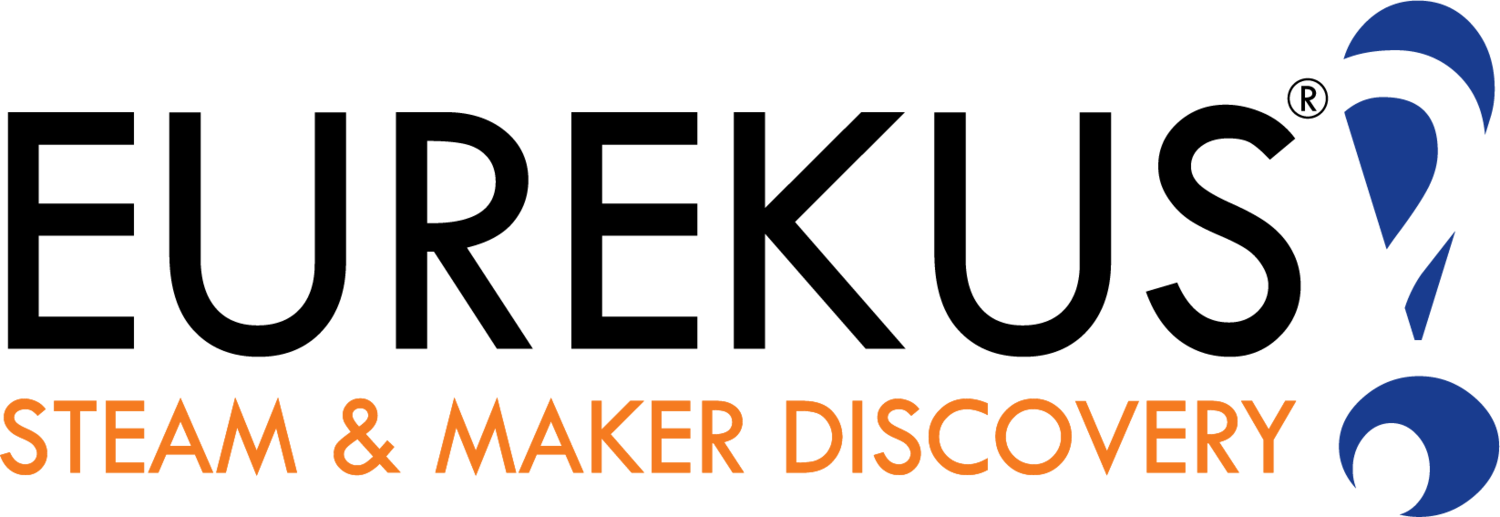GOLDILOCKS PLANET PROJECT
Art Activates Earth Science Discovery
Scientists often call our home world the “Goldilocks Planet” – not too hot, not too cold, but just right for the presence of liquid surface water. Fuse topics in Earth science, geography and ecology to unlock the water mysteries of our planet through place-based investigation. Become a “water detective” analyzing NASA satellite images through the elements of art. Plus, integrate investigation with geometry and create with any media - pastels, collage, ceramics, etc.
This program is the Earth version of NASA’s Art & The Cosmic Connection
-
K-12th Grade
College Students
Adult Learners
-
1.5 - 2 hours
Chunk out in 2 phases - Presentation & Art Making
-
Hydrology
Earth Science
Math
Geology
Geography
Visual Art
-
In-class, Hybrid or Online Learning
Implementation Steps

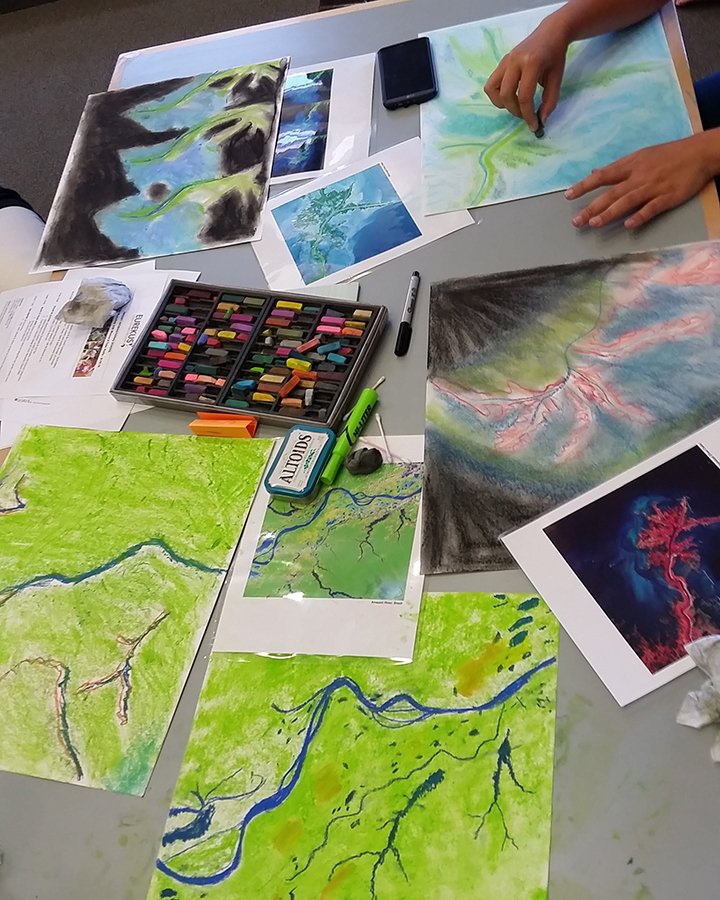
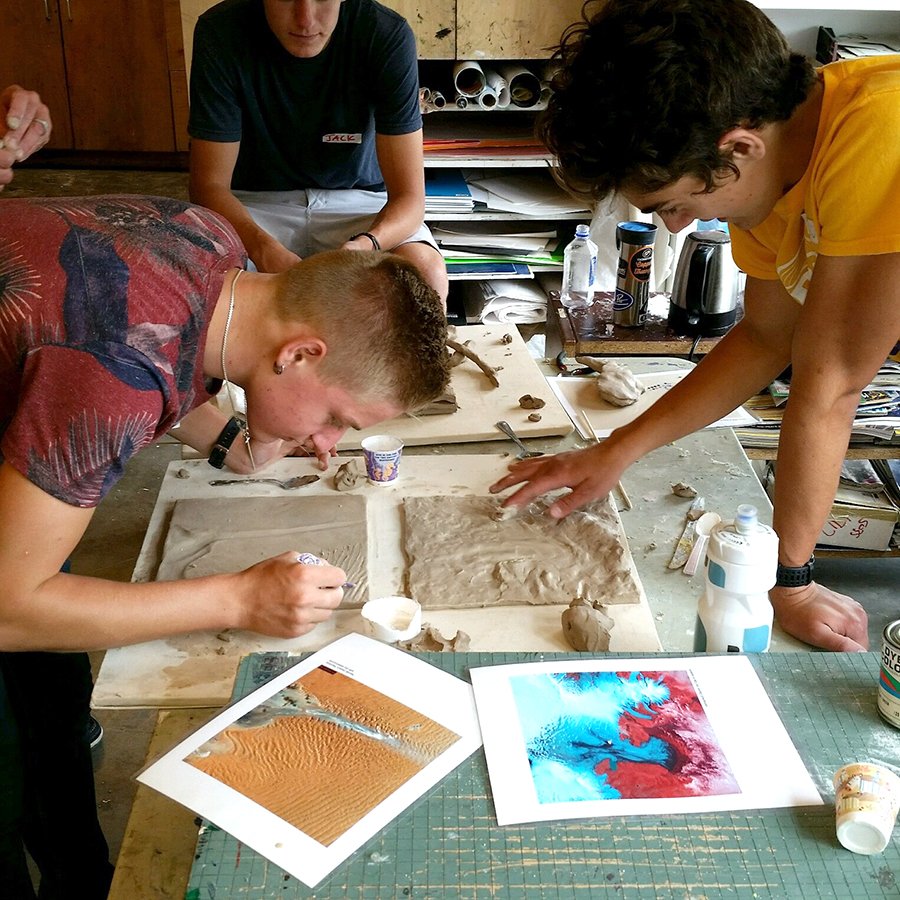
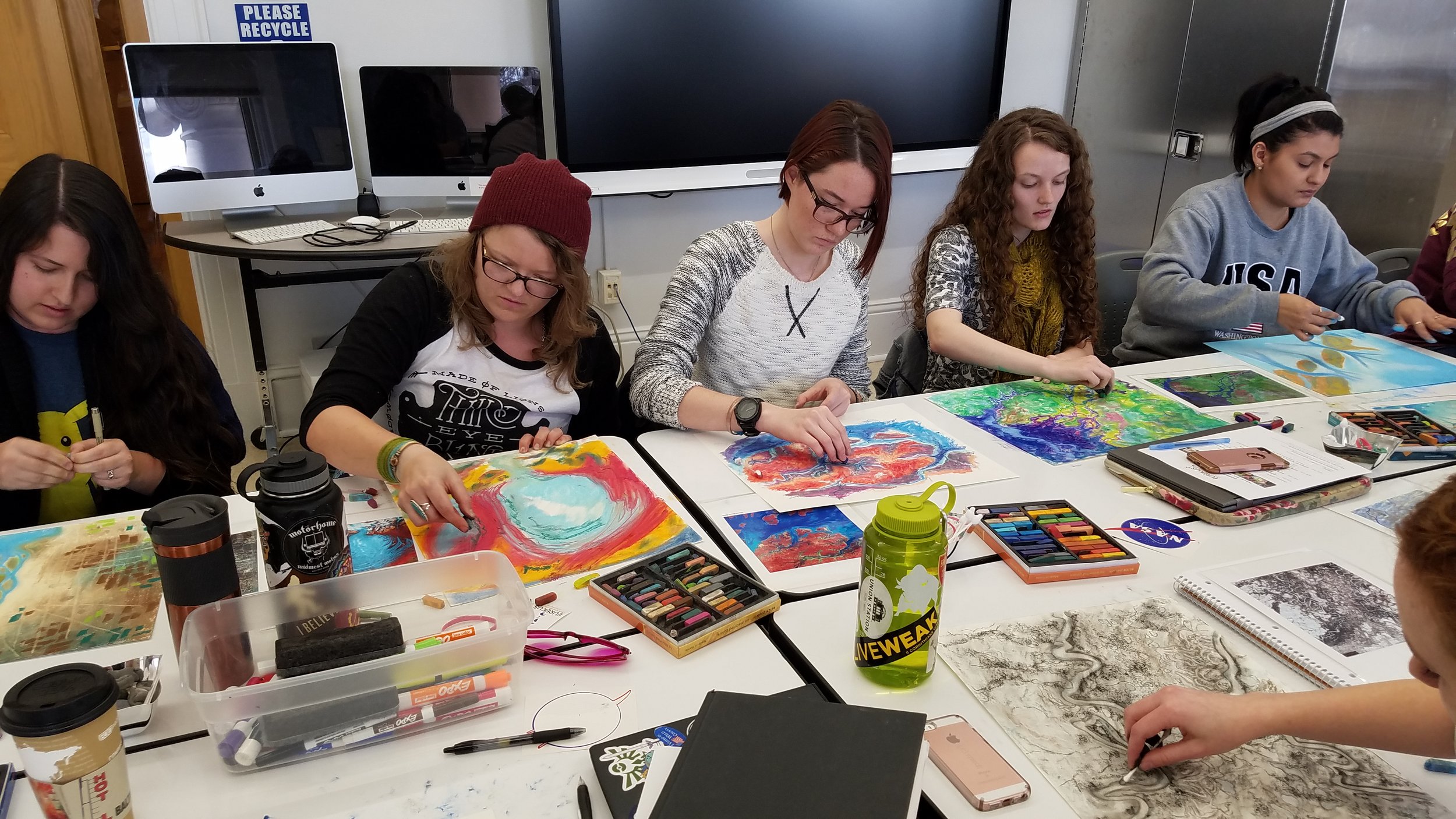
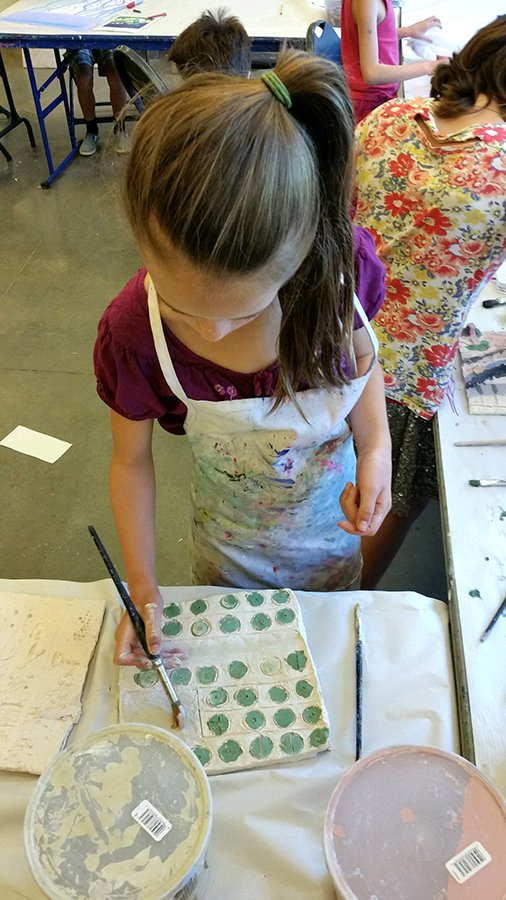
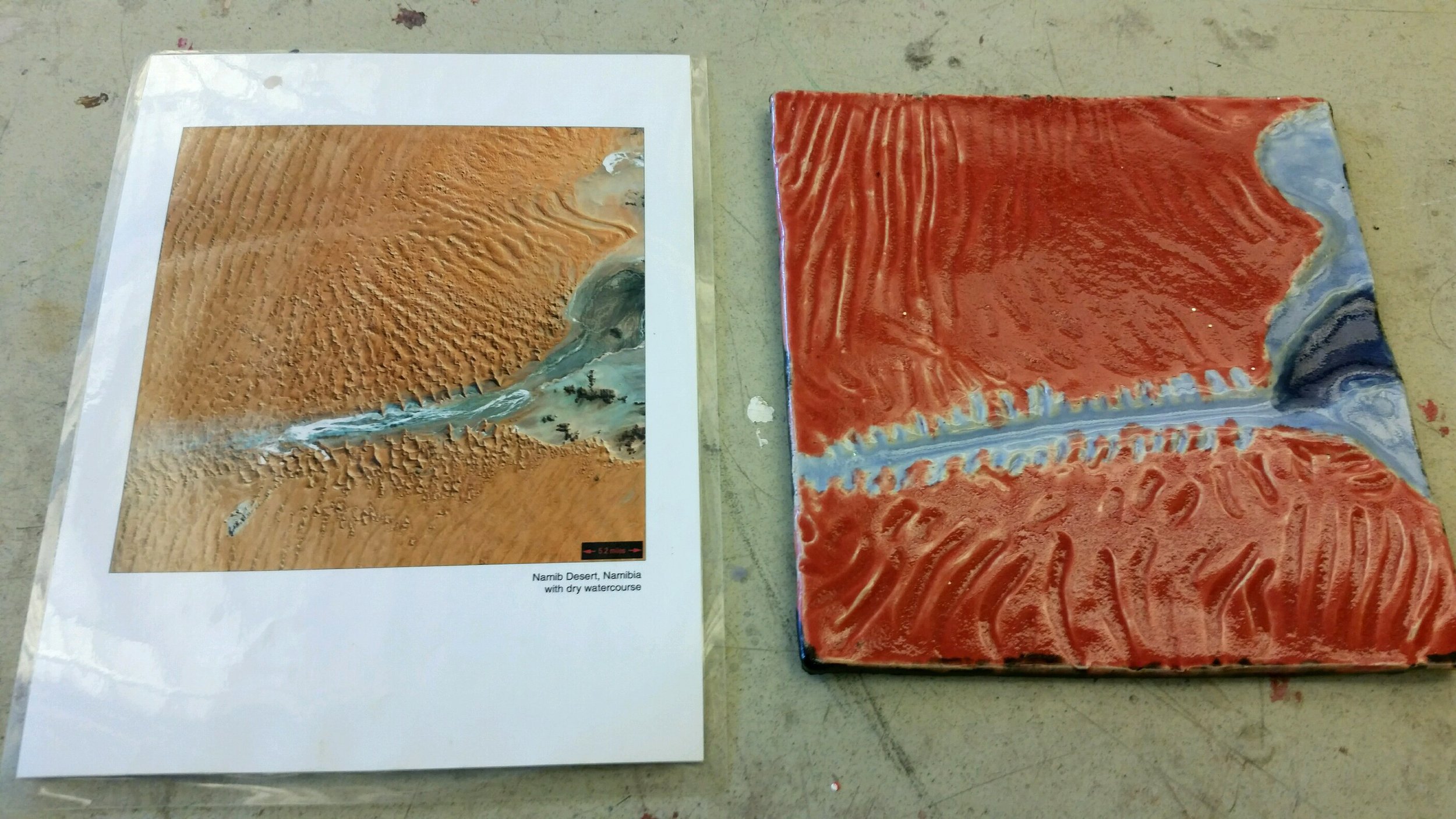


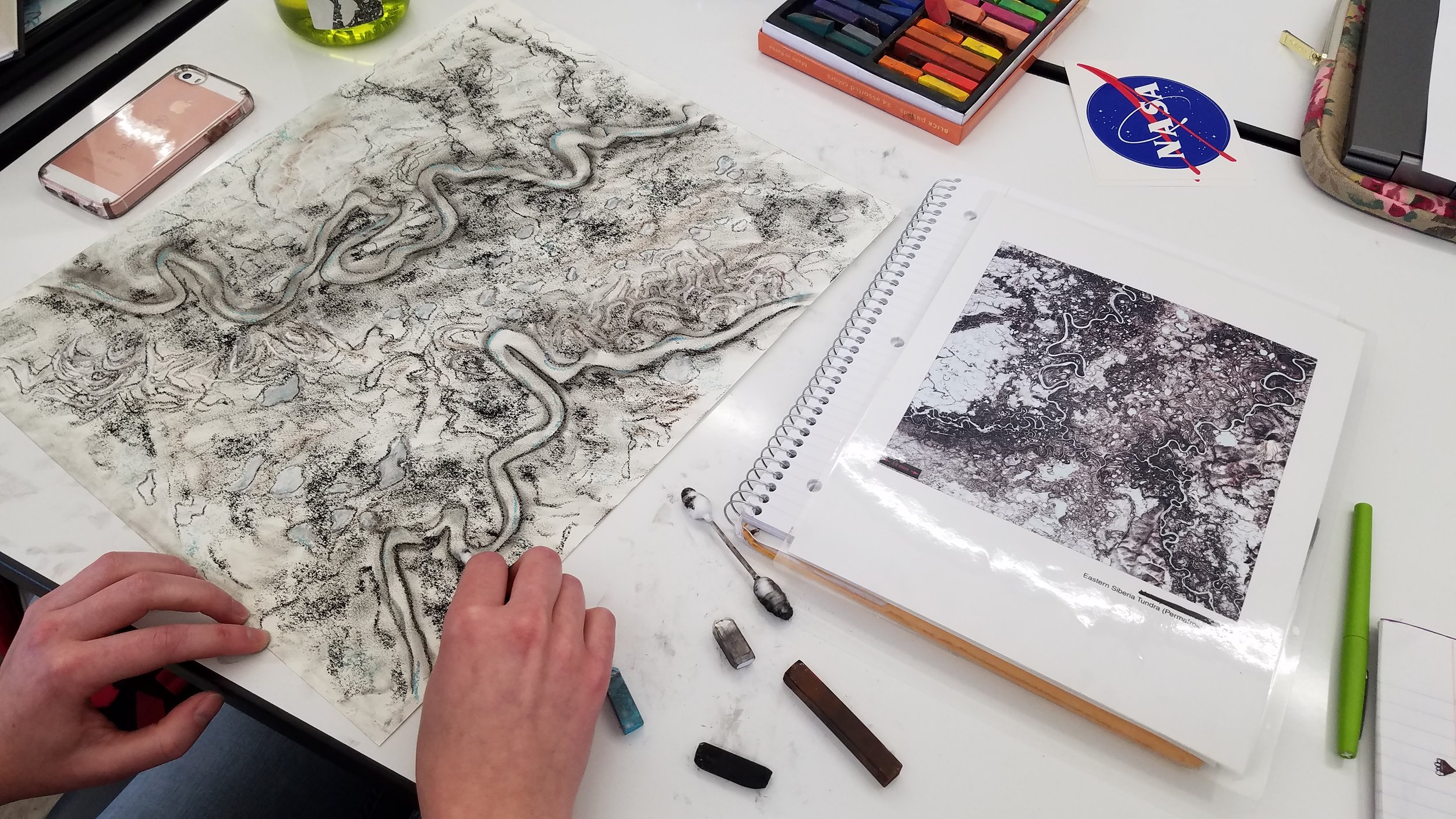

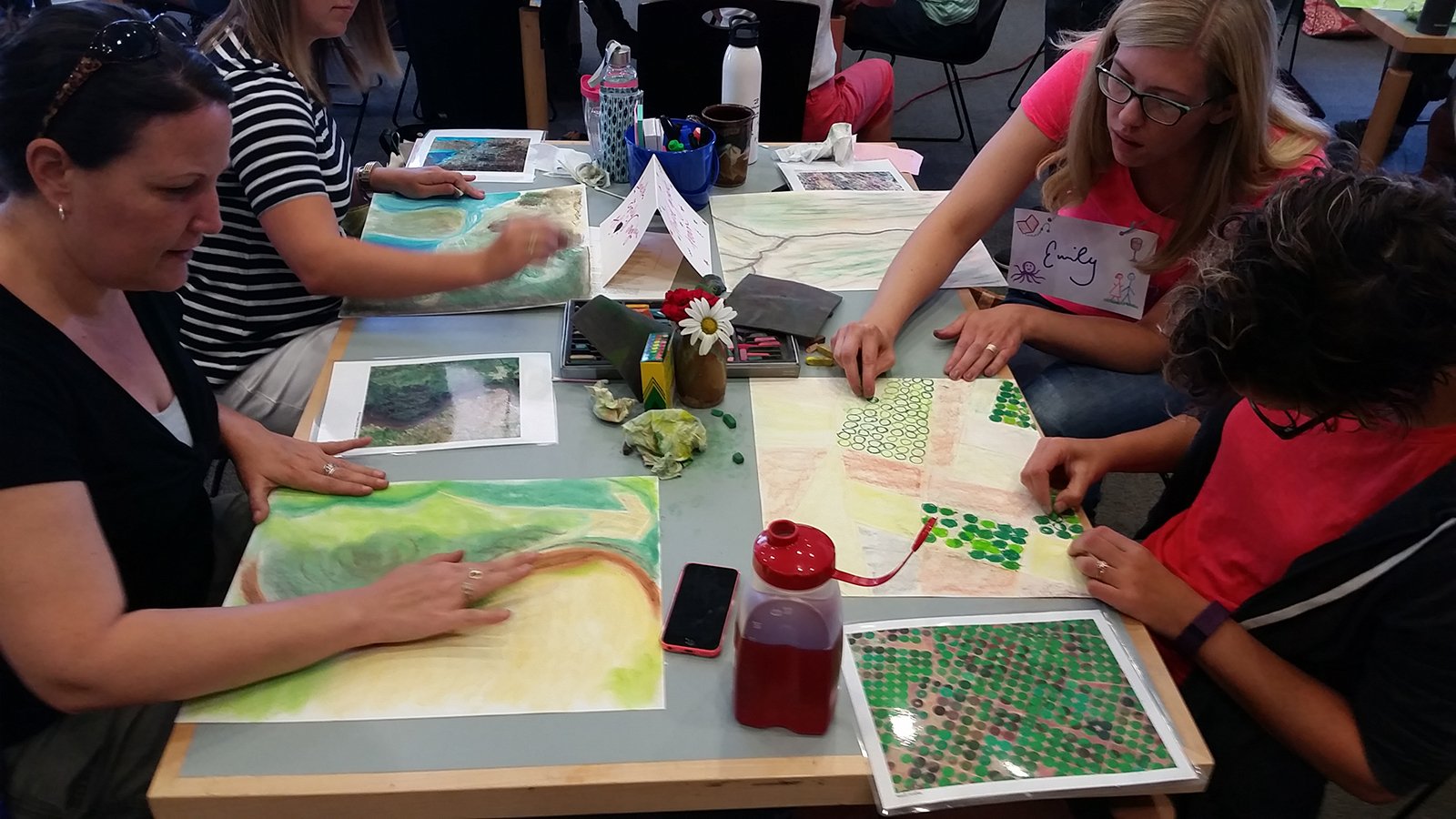
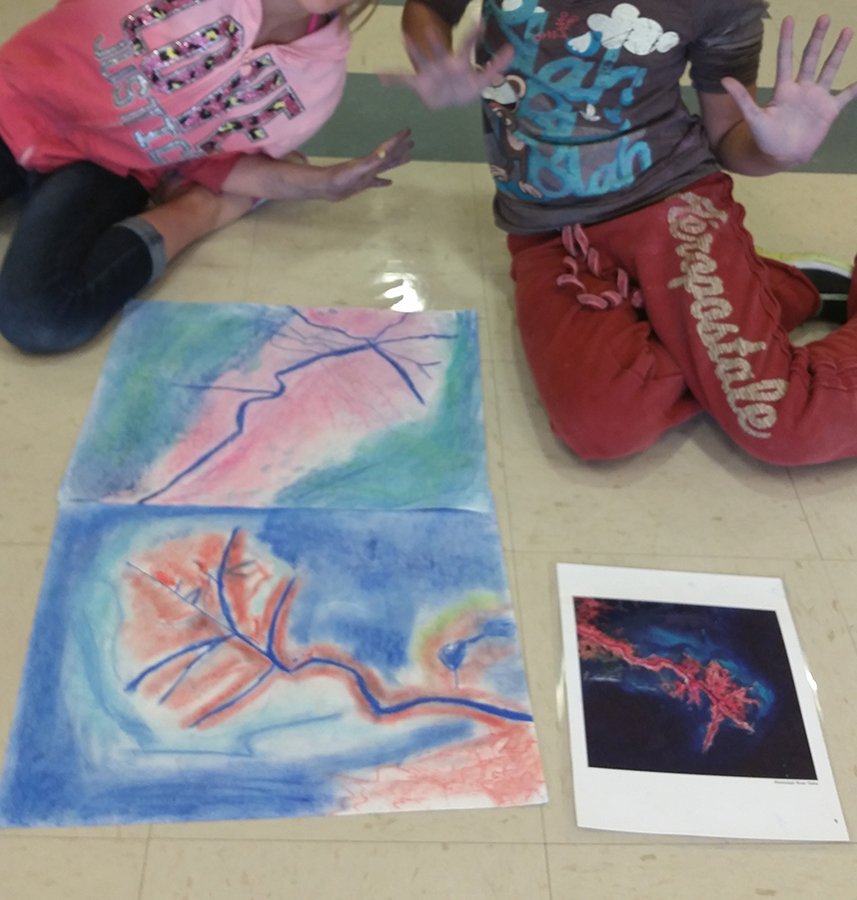




Overview
-
Download the lesson guide, presentation, & resources below. Print and laminate the inspiration images of your choice. You can even explore NASA’s Earth Observatory and Google Earth to collect your own images.
-
You can use any media for the art project. We love soft pastel and have included supply lists in the Leader Guide.
You can also create with collage, oil pastel, painting, mixed-media and even ceramics. Collect supplies based how you would like to implement the art project.
-
Explore our gallery of student work for inspiration. Be creative as you customize this program for your community. Watch the videos of class examples and think of ways you can tailor this program for your learners.
-
Customize and give your PowerPoint presentation in class. Take a tour of Earth with amazing NASA images. Learn to detect water in its many forms through the Elements of Art ~ line, shape, color, value, texture. Encourage lots of questions & discussion.
-
Have learners pick a beautiful NASA image to inspire their art making. They will connect the Elements of Art to the story of water on Earth.
Use any art media of your choice. Creating encourages learners to dive deeper into concepts, hone observational skills and boost critical thinking.
Planners, Templates & Handouts
Get Resources
-
Download the Leader Guide for detailed instructions.
-
Customize & adapt for your learners. The PowerPoint includes science notes & a detailed script.
-
Download awesome NASA remote sensing images to inspire your art making. We recommend printing and laminating these so you can use them again & again.
You can also collect your own remote sensing images at the following websites:
-
You can easily customize and adapt this program to excite your unique learners. Here are some ideas of what educators have done to connect content and storylines.
Explore water near urban centers & agricultural patterns while re-enforcing 2D geometry through collage.
Integrate with geography & history lessons.
Explore major rivers and their connections to societies.
Use to investigate the links between water management and ecology.
Dive deep into the concept of the Anthropocene while exploring human impact on earth.
Use to activate Earth science lessons about the water cycle.
Explore the continents, plate tectonics, oceans & seas.
Look closer at frozen water & climate impact ~ arctic zones, ice sheets, snow pack, glaciers, etc.
Integrate with comparative planetology ~ explore water on earth vs. other worlds (Mars, Titan, etc.)
Investigate the concept of “place” by having students research their own images and topics while make art with a personal connection.
Create 3D landforms while implementing the program with ceramic tiles.
STEAM In Action
Check out these awesome videos produced by Colorado College students diving deep into the Goldilocks Planet Project. They explored the program with Eurekus for an exciting transdisciplinary class block. They then customized and adapted lessons for an enriching community outreach program at Taylor Elementary. CC undergrads guided K-5th grade students through water investigations, art making and field trips to the college’s museum. They also curated video essays of their experience.
COPYRIGHT NOTICE:
These resources are developed and owned by Eurekus LLC and is intended for educational purposes only. No portion of the instructional webpage or associated materials can be copied, distributed or edited for commercial purposes without the express written consent from Eurekus LLC.
